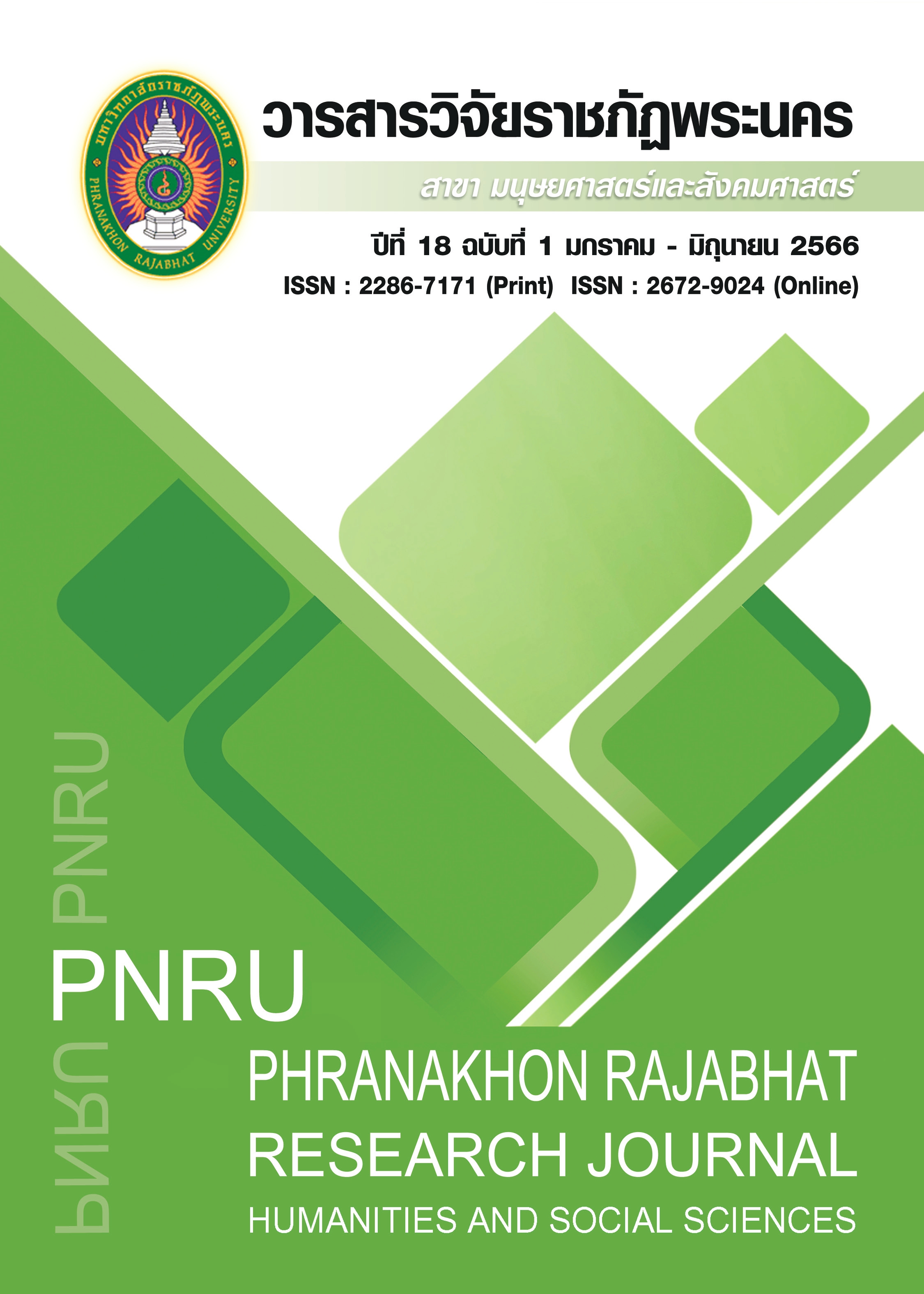CREATING AND DEVELOPING PUBLIC RELATIONS MEDIA FOR PROMOTING THAI PHUAN ETHNIC CULTURAL TOURISM IN PAK PHLI DISTRICT NAKHON NAYOK PROVINCE BY DESIGN THINKING
Main Article Content
Abstract
This article's objective was to study the creating and developing of public relations media for promoting tourism in the Thai Phuan Community, Pak Phli District, Nakhon Nayok Province of the 3rd year Communication Arts students majoring in public relations, Faculty of Management Sciences, Phranakhon Rajabhat University, in the first semester of the academic year 2022 in the subject of public relations and cultural information. It used the five-step design thinking process of the Stanford School as follows: 1) Empathize, 2) Define, 3) Ideate, 4) Prototype, and 5) Test. In this study, when creating and developing public relations media was finished, it was tested by a satisfaction survey of a sample group of 400 people in Bangkok with a questionnaire. The results analysis used descriptive statistics such as mean and standard deviation and reference statistics with t-test and F-test. It was found that the created and developed public relations media, both poster and multimedia had a survey result at a good level and found that different ages had different satisfaction too. In this study, the students learned by using the community as a classroom in real situations. It integrated teaching, research, academic service, and art and culture homogeneously. The design thinking process was used as a conceptual framework in this study.
Article Details

This work is licensed under a Creative Commons Attribution-NonCommercial-NoDerivatives 4.0 International License.
Each publish articles were copyright by Phranakorn Rajabhat University
Any contents which appeared in each articles in the journal were authors personal opinion. It did not relate to Phranakorn Rajabhat University and other instructors in the university. Each authors would take responsibility on their articles. If there are any mistake, the authors will take responsibility themselves
References
Chamnancha, B. & Kongudomsup, S. (2020). The study of community-based learning: Bang Numphueng community, case-study of Southeast Bangkok College. Southeast Bangkok Journal. 6(1), 37-49. (In Thai)
Cox, M. (2016). The role of design thinking in innovation. Retrieved from https://medium.com/pancentric-people/the-role-of-design-thinking-in-innovation-ba68a3d91683 [2022, 11 Oct.]
Institute for the Promotion of Teaching Science and Technology: IPST. (n.d.). Background of design concept. Retrieved from http://designtechnology.ipst.ac.th/wp-content/uploads/sites/83/2020/01/2_ [2022, 11 Oct.] (in Thai)
Israsena, P. & Treerattanaphan, C. (2017). Design Thinking: Learning by Doing. Bangkok: TCDC. (In Thai)
Janjamsai, M. (2015). Community architecture classroom Community based learning: case study: Integration of architectural design learning and low-income housing development (Bann Munkong: Project at Rama 9 Sump 3 Community. Area Based Development Research Journal. 7(3), 106-117, (In Thai)
Ministry of Tourism and Sports. (2021). National tourism development plan 2021-2022. Retrieved from https://chainat.mots.go.th/download/article/article_20210602104504.pdf [2022, 11 Oct.] (In Thai)
Quality Man. (2019). 5 Steps of design thinking. Retrieved from https://www.blockdit.com/posts/5c50021205fe33449b0680a7 [2022, 11 Oct.] (In Thai)
Ratanasuwan, D. (2017). The education royal policy in His Majesty the King Ramathibodi Maha Vajiralongkorn Phra Wachiraklaochaoyuhua with the development of education. Retrieved from https://edu.chula.ac.th/sites/default/files/2019- [2019, sJul.] (In Thai)
Sriharun, P. & Kampetch, P. (2018). Community tourism: A new alternative to sustainability. Dusit Thani College Journal. 12(3), 118-132. (In Thai)
Supanburi College of Fine Arts. (2013). Community based learning technic. Suphanburi: Ministry of Culture. (In Thai)
Watanachai, W. (2017). The education royal policy in His Majesty the King 10. Retrieved from https://www.attth.org [2017, 18 Aug.] (In Thai)


